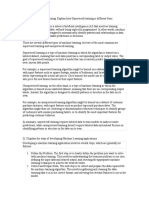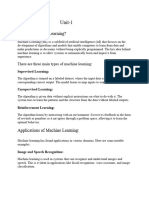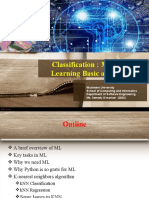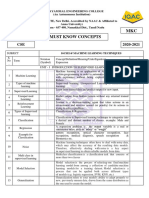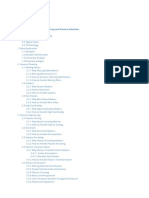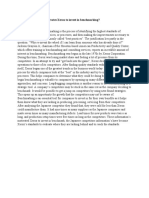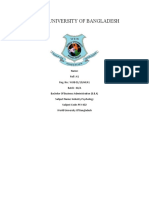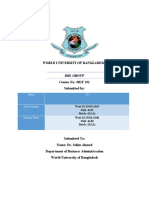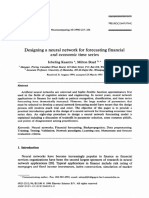0% found this document useful (0 votes)
36 views3 pagesDMML Assignment
The document outlines key concepts in data mining and machine learning, including definitions and examples of data, features, labels, training and testing data, algorithms, overfitting, underfitting, cross-validation, confusion matrices, precision and recall, as well as supervised and unsupervised learning. It serves as an educational resource for understanding fundamental terms and techniques in the field. The assignment is submitted by Ahanaf Al Mashfi to Dr. Md Alamgir Kabir at Daffodil International University.
Uploaded by
Atick ArmanCopyright
© © All Rights Reserved
We take content rights seriously. If you suspect this is your content, claim it here.
Available Formats
Download as PDF, TXT or read online on Scribd
0% found this document useful (0 votes)
36 views3 pagesDMML Assignment
The document outlines key concepts in data mining and machine learning, including definitions and examples of data, features, labels, training and testing data, algorithms, overfitting, underfitting, cross-validation, confusion matrices, precision and recall, as well as supervised and unsupervised learning. It serves as an educational resource for understanding fundamental terms and techniques in the field. The assignment is submitted by Ahanaf Al Mashfi to Dr. Md Alamgir Kabir at Daffodil International University.
Uploaded by
Atick ArmanCopyright
© © All Rights Reserved
We take content rights seriously. If you suspect this is your content, claim it here.
Available Formats
Download as PDF, TXT or read online on Scribd
/ 3

















